- Home
- James Rollins
The Demon Crown: A Sigma Force Novel Page 2
The Demon Crown: A Sigma Force Novel Read online
Page 2
“Well spoken,” Bishop said, holding out his gloved palms. The weather was growing harsher by the minute, and the consul clearly wanted this matter finished.
Alexander didn’t argue. He handed over the skull so it could be transferred to the zinc casket and returned his attention to the tomb. He had already noted a rectangular shape in one corner.
Reaching in again, he waved away the dust to reveal a small metal chest.
Could this be the source of such consternation?
It took all his strength to lift the box out of the tomb. It was dreadfully heavy. He hauled it aside and balanced it atop a nearby gravestone. Bishop ordered the workers to finish transferring the bones, then returned to his side, as did Mabel.
“It that it?” his wife asked.
Alexander turned to Bishop. “Let me remind you again. There is to be no official or unofficial mention of this object. Is that understood?”
Bishop nodded and glanced to the rest of the party, who were busy at work. “You’ve paid well for their silence.”
Satisfied, Alexander unlatched and opened the lid of the chest. Inside, a bed of sand cradled something the size and color of a pumpkin. He stared at it breathlessly for a moment.
“What is it?” Mabel asked.
“It . . . it appears to be a chunk of amber.”
“Amber?” Bishop’s voice held a note of avarice. “Is it valuable?”
“Somewhat. Though nothing exceptional. It’s basically fossilized tree sap.” Frowning, he leaned closer. “Bishop, would you ask that worker if we could borrow his lantern?”
“Why—?”
“Just do it, man. We don’t have all day.”
Bishop rushed over.
Mabel stood at his shoulder. “What do you think, Alec?”
“I can make something out. Through the amber. But just barely.”
Bishop returned, lantern in hand.
Alexander took it, twisted the flame brighter, and brought it close to the translucent chunk of amber. It glowed a rich honey, revealing what it hid at its heart.
Mabel gasped. “Are those bones?”
“I believe so.”
It seemed Smithson’s tomb held more than just his own moldering remains.
“But what are they?” Bishop asked.
“No idea. But surely something prehistoric.”
He leaned closer, squinting. At the heart of the amber rested a small, fist-size triangular skull bearing a prominent row of sharp teeth. It looked distinctly reptilian, maybe those of a small dinosaur. A halo of smaller bones floated within the glowing stone. He pictured ancient tree sap flowing over this creature’s old grave, stirring up its bones and forever trapping them in this position.
The tinier bones had come to form a ghastly halo above the skull.
Like a crown.
He glanced to Mabel, who took a deep breath as she recognized the pattern. She knew, too, that this must be what Smithson wrote about—what he aptly named the Demon Crown.
“Impossible,” his wife whispered.
He nodded. In his pocket, he held a burned page from Smithson’s diary, upon which the man had scribbled a remarkable claim about this artifact.
It had to be impossible, as his wife said.
He pictured Smithson’s words, what the dead man had written concerning this artifact.
Be warned, what the Demon Crown holds is very much alive . . .
Alexander felt an icy trickle of terror.
. . . and ready to unleash the very hordes of Hell upon this world.
8:34 P.M. EDT
November 3, 1944
Washington, D.C.
“Careful of the rats,” James Reardon warned at the entrance door to the tunnel. “Some real bruisers down here in the dark. One bit off the end of a worker’s thumb last month.”
Archibald MacLeish suppressed a shudder of disgust as he hung his jacket on a hook next to the door. He wasn’t exactly outfitted for an excursion underground, but he had been late getting here, as an evening meeting at the Library of Congress had run long.
He stared down the five steps that led to the old subterranean tunnel connecting the Smithsonian Castle to its neighbor across the mall. The newer museum, the Natural History building, was completed in 1910, when ten million objects had been ferried by horse-drawn cart from the Castle to their present home. For a decade afterward, the two buildings had shared utilities via this seven-hundred-foot-long tunnel, but with later modernizations, the passageway was eventually closed off and seldom tread, except by the occasional maintenance crew.
And apparently some overgrown vermin.
Nevertheless, Archibald had believed there might be a new use for this abandoned tunnel. As the current Librarian of Congress and head of the Committee for the Conservation of Cultural Resources, he had been tasked to secure the nation’s treasures at the start of World War II. Fearing bombing raids like those that had beset London during the Blitz, he had personally overseen the shipment of priceless documents—the Declaration of Independence, the Constitution, even a copy of the Gutenberg Bible—to the safety of Fort Knox. Likewise, the National Gallery of Art had transferred their most prized masterpieces to the Biltmore House in North Carolina, while the Smithsonian had buried the Star-Spangled Banner deep in Shenandoah National Park.
Still, Archibald had hated the piecemeal approach to these important efforts. Indeed, back in 1940, he had advocated for building a bombproof shelter beneath the National Mall as a more permanent solution. Unfortunately, Congress had shot down his idea due to the expense.
Despite this setback, Archibald had never given up on his idea—which was why he found himself in the basement levels of the Smithsonian Castle, where temporary bomb shelters had been secured for museum personnel. Three weeks ago, Archibald had hired a pair of engineers to conduct a feasibility study, to explore if such a vault could be constructed in secret, branching off this very tunnel. Then two days ago, during their surveys, the pair had discovered a side door in the tunnel, halfway across the Mall. It was hidden behind some pipes and bricked over.
Archibald had immediately informed James Reardon, the current undersecretary of the Smithsonian. As a longtime friend, James had supported Archibald’s efforts for the construction of a bombproof vault. The pair hoped that this discovery might stoke a renewed interest in the shelter, especially considering who had apparently hidden this room. His name was found inscribed on a plaque affixed to the steel door after its layer of bricks had been removed.
Alexander Graham Bell.
The notice came with a warning.
What lies beyond this door is both a wonder and a danger like no other. It could alter the course of mankind forever, or in the wrong hands, it could equally doom us all. We the undersigned deem this artifact too treacherous to come to light, but we dare not destroy it—for at its heart lies the possible key to life beyond death.
It was a remarkable claim, but the message was supported by the signatures of five regents of the Smithsonian board. James had verified the names. They were all deceased now, and no other record could be found concerning the circumstances that led Bell and these five to secure something beneath the National Mall, not to mention keeping such an effort from the other regents at the time.
Respecting that level of secrecy, Archibald had limited the knowledge of the door’s discovery to only his friend James. The two engineers had been sworn to secrecy and now waited below, ready to break the lock and see for themselves what required such subterfuge almost four decades ago.
“We should hurry,” James said, checking his pocket watch.
Archibald understood. They were already running an hour behind schedule due to his tardiness in getting here. “Lead the way.”
James ducked through the door and down the steps. He moved spryly, while it took Archibald more time to maneuver the steep, narrow stairway. Then again, James was fifteen years younger and spent more time on his feet doing fieldwork as a geologist. Archibald was a fifty-f
our-year-old poet who had been coerced by FDR into taking a desk job—or as Archibald had described this assignment at the time, the president decided I wanted to be Librarian of Congress.
He entered the dank tunnel. The way ahead was lit by a string of caged electrical bulbs running along the low roof. Several were broken or missing, leaving long gaps of darkness.
James clicked on a thick flashlight and set off down the tunnel.
Archibald followed. Though the passageway was tall enough for him to walk upright, he kept his back hunched and his head low, well away from the run of dark pipes along the ceiling. Especially upon hearing the occasional sound of nails scratching and bodies scurrying up there.
After a few minutes, James suddenly stopped.
Archibald almost bumped into him. “What’s wr—?”
A series of sharp cracks echoed from the passageway ahead.
James glanced back, his eyebrows bunched together with concern. “Gunfire.” He doused his flashlight and freed a Smith & Wesson pistol from a holster under his work jacket. Archibald hadn’t known the man was armed, but considering the size of the vermin down here, the presence of the weapon made sense.
“Go back.” James passed him his flashlight, then cupped both hands around the grip of his weapon. “Get help.”
“From where? The Castle’s deserted at this hour. By the time I raise an alarm, it’ll be too late.” Archibald lofted the long-handled flashlight like a club. “We go together.”
A muffled explosion decided the matter.
James grimaced and headed forward, keeping close to one wall and staying in the shadows as much as possible. Archibald followed his example.
Within a few steps, a cloud of dust rolled over them, blown forth by the blast. Archibald fought against coughing, but the air quickly cleared. The same couldn’t be said for the passageway. A smattering of dark forms sped across the floor and along the pipes.
Rats . . . hundreds of them.
Archibald had to stifle back a scream as he flattened along one wall. Something dropped from overhead, landed on his shoulder, and bounded away with a sharp squeak. Other bodies pattered over his shoes. A few scrabbled up his pant legs as if he were a tree in a flood-swept river.
Ahead, James seemed unfazed and continued on, oblivious to the squirming bodies underfoot.
Gritting his teeth, Archibald waited until the worst of the horde fled past him, then hurried to catch up.
As the two reached a dark stretch of broken bulbs, a glow appeared ahead, marking a pair of lanterns resting on the floor. The pool of light revealed a body.
One of the engineers.
Other shadowy shapes stepped into view, appearing from the left.
Three masked men.
James dropped to a knee and immediately fired. The loud blast made Archibald jump, deafening him in turn.
One of the intruders spun and struck the wall.
James gained his feet and fired again, running forward. Archibald froze a breath, then gave chase, too. In the tumult that followed, lit by the camera-bulb flashes of gunfire, he watched one of the masked men try to haul his wounded companion to his feet, but James refused to relent, squeezing his trigger over and over again as he ran. Rounds sparked off the nearby pipes and concrete walls.
The third intruder fled down the tunnel with a heavy satchel in one hand, blindly returning fire over his shoulder. The shots went wild as the man was plainly more intent on escaping. His companion finally followed, forced by James’s barrage to abandon the slumped form on the ground.
As James and Archibald closed the distance, another explosion knocked them both back. Flames blasted out an open doorway to the left and washed into the tunnel.
Archibald shielded his face with an arm.
As the fire guttered out, James led the way again.
Archibald quickly took in the damage as they reached the doorway. The engineer who lay crumpled at the threshold had been shot in the back of the head. The other was dead in the neighboring room, his clothes on fire from the blast. More flames raged at the rear of the small concrete chamber, turning it into a furnace, fueled by a burning bookshelf and the tomes that once rested there. Fiery pages still floated in the air, drifting through the smoke-choked air.
Nearby, James checked the assailant slumped on the ground. He swatted at the man’s burning clothes, then set about searching his body.
Archibald kept his full attention on the neighboring room. A waist-high marble plinth stood in the center. A small metal chest lay toppled and open at its foot, likely blown off its pedestal by the blast. The box appeared to be empty, except for a pile of sand that had spilled out as it struck the floor.
He pictured the heavy satchel in the hands of the fleeing thief. With a sinking heart, he knew that whatever Bell and his cohorts had hidden here was gone. Still, he lifted his arm over his mouth and nose and ducked into that wall of heat, drawn by something he spotted poking out of the sand.
He stepped around the dead engineer to reach the chest. Dropping to a crouch, he grabbed what was exposed and pulled it free. It appeared to be the remains of an old field notebook or journal. Its leather cover had been blackened by a fire far older than what raged here now. A quick flip revealed most of the pages were charred or missing—but not all.
He imagined the thieves must have failed to spot the remains of this old journal hidden in the sand at the bottom of the chest. Sensing some significance to this discovery, he retreated with his prize.
“Look at this,” James said as he returned to the tunnel.
James sat back on his heels. He had peeled away the thief’s woolen face mask.
Archibald took in the sight, shocked by what was revealed. “My god . . . it’s a woman.”
But that wasn’t the only surprise. The thief had black hair and wide cheekbones, and from the pinched squint to her dead eyes, there was little doubt to the figure’s heritage.
“She’s Japanese,” Archibald mumbled.
James nodded. “Likely a Jap spy. But this is what I wanted you to see.” He lifted her lifeless arm to reveal something tattooed on the thief’s inner wrist. “What do you make of this?”
Archibald leaned closer, frowning as he studied the mark.
“Any idea what this might mean?” James asked.
Archibald glanced back to the burning room. Its door lay crookedly to one side, blown off its hinges. The inscribed metal plaque glowed in the firelight, as if emphasizing the warning about what was once hidden here.
. . . a danger like no other.
“No,” Archibald said, “but for the sake of our nation—and maybe the world—we need to find out.”
FIRST
COLONIZATION
Σ
1
Present Day
March 8, 3:45 P.M. BRT
Ilha da Queimada Grande, Brazil
The dead man lay sprawled facedown, half in the sand, half in the grass.
“Poor bastard almost made it back to his boat,” Professor Ken Matsui noted.
He stepped aside to allow the team’s doctor—a young woman named Ana Luiz Chavos—to examine the body. Anyone officially setting foot on Ilha da Queimada Grande, an island some twenty miles off the coast of Brazil, was required to be accompanied by a medical doctor, along with a representative from the Brazilian navy.
Their military escort, First Lieutenant Ramon Dias, checked the small motorized skiff that was camouflaged and hidden among some rocks a few yards away. He snorted derisively and spat into the waves. “Caçador furtivo . . . idiota.”
“He says the man must’ve been a poacher,” Ken explained to his postgraduate student. The two of them had traveled together from Cornell University to this remote Brazilian island.
Oscar Hoff was twenty-seven, shaven headed, with a sleeve of tattoos down his left arm. His exterior gave him a hardened, street-tough look, but it was all show for that occasional young coed who mistook the book for the cover. From his presently sallow complexion
and the sickened twist to his lips, it was clear this was the first body the student had stumbled across. Of course, the state of the deceased likely didn’t help matters. The body had been picked and scavenged by birds and crabs. A black stain soaked the sand in a wide pool around the body.
Dr. Chavos seemed little bothered by the condition of the deceased. She examined one bare arm, then the other, then sat back on her heels. She spoke matter-of-factly in Portuguese to Dias, then to the waves as she stared toward the sun hanging low in the sky. Sunset was only a couple of hours off.
“Dead for at least three days,” Ana Luiz assessed aloud and pointed to the man’s left arm. From the elbow to his wrist, most of the flesh was blackened and necrotic. A flash of white bone shone through the melted tissues. “Snakebite.”
“Bothrops insularis,” Ken surmised as he glanced up the neighboring rocks and toward the rain forest that crowned the heights of this hundred-acre island. “The golden lancehead pit viper.”
“It is why we call this place Snake Island,” Diaz said. “This is their island. And you’d do wise to respect that.”
It was the pit vipers’ dominance on the island—and their endangered status—that restricted access to Queimada Grande to the Brazilian navy. They came once every two months to service the lone lighthouse here. Even that beacon was automated after the first family of lighthouse keepers—a wife, husband, and three children—were all killed one night when snakes slipped inside through an open window. The family tried to flee but were bitten by more vipers hanging from branches along the forested path to the beach.
Since then, tourists were forbidden from setting foot here. Only the occasional scientific team was allowed to visit, but even they had to be accompanied by a doctor armed with antivenom and a military escort.
Like today.
With the substantial backing of his Japanese financiers, Ken was able to wrangle this last-minute trip, tucking it in before a storm that was due to strike the region tomorrow. He and his student had to rush from their hotel in the small coastal village of Itanhaém in order to take advantage of this opportunity. They barely made the boat in time.

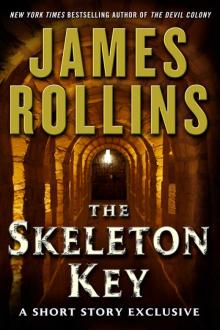 The Skeleton Key
The Skeleton Key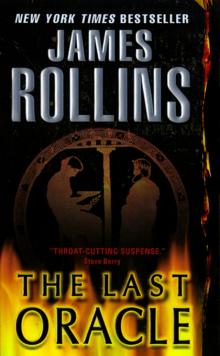 The Last Oracle
The Last Oracle The Judas Strain
The Judas Strain Black Order
Black Order Sandstorm
Sandstorm Ghost Ship
Ghost Ship The Devil Colony
The Devil Colony Subterranean
Subterranean The Doomsday Key
The Doomsday Key The 6th Extinction
The 6th Extinction Bloodline
Bloodline Jake Ransom and the Howling Sphinx
Jake Ransom and the Howling Sphinx The Midnight Watch
The Midnight Watch Map of Bones
Map of Bones The Demon Crown
The Demon Crown Deep Fathom
Deep Fathom Sigma Guide
Sigma Guide Kowalski's in Love
Kowalski's in Love Jake Ransom and the Skull King's Shadow
Jake Ransom and the Skull King's Shadow Excavation
Excavation The Seventh Plague
The Seventh Plague Altar of Eden
Altar of Eden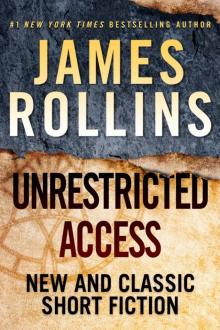 Unrestricted Access: New and Classic Short Fiction
Unrestricted Access: New and Classic Short Fiction Indiana Jones and the Kingdom of the Crystal Skull
Indiana Jones and the Kingdom of the Crystal Skull Crucible
Crucible The Eye of God
The Eye of God The Bone Labyrinth
The Bone Labyrinth The Last Odyssey: A Thriller
The Last Odyssey: A Thriller Unrestricted Access
Unrestricted Access Amazonia
Amazonia Blood Brothers: A Short Story Exclusive
Blood Brothers: A Short Story Exclusive Map of Bones: A Sigma Force Novel
Map of Bones: A Sigma Force Novel The Skeleton Key (sigma force)
The Skeleton Key (sigma force)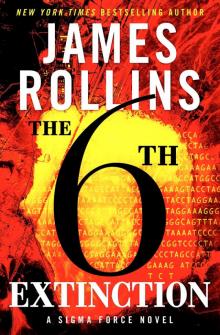 Sigma Force 10 - The Sixth Extinction
Sigma Force 10 - The Sixth Extinction Innocent Blood
Innocent Blood Map of Bones sf-2
Map of Bones sf-2 The Eye of God: A Sigma Force Novel
The Eye of God: A Sigma Force Novel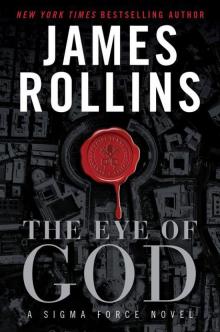 The Eye of God: A Sigma Force Novel sf-9
The Eye of God: A Sigma Force Novel sf-9 The Pit
The Pit Indiana Jones and the The Kingdom Of The Crystal Skull
Indiana Jones and the The Kingdom Of The Crystal Skull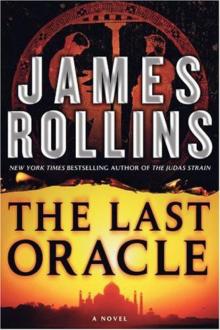 The Last Oracle (2008) sf-5
The Last Oracle (2008) sf-5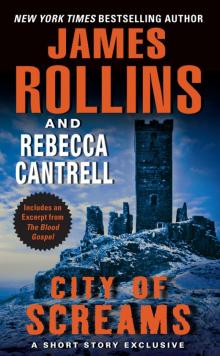 City of Screams
City of Screams The Doomsday Key and The Last Oracle with Bonus Excerpts
The Doomsday Key and The Last Oracle with Bonus Excerpts The Judas Strain sf-4
The Judas Strain sf-4 Blood Infernal
Blood Infernal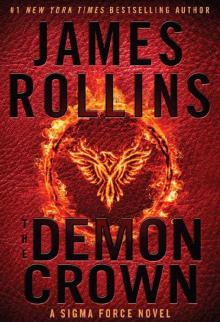 The Demon Crown: A Sigma Force Novel
The Demon Crown: A Sigma Force Novel War Hawk: A Tucker Wayne Novel
War Hawk: A Tucker Wayne Novel SANDSTORM sf-1
SANDSTORM sf-1 Bloodline: A Sigma Force Novel
Bloodline: A Sigma Force Novel Amazonia: a novel
Amazonia: a novel The Last Oracle: A Sigma Force Novel
The Last Oracle: A Sigma Force Novel City of Screams (the order of the sanguines)
City of Screams (the order of the sanguines)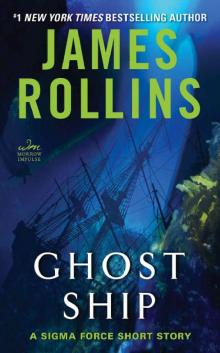 Ghost Ship: A Sigma Force Short Story
Ghost Ship: A Sigma Force Short Story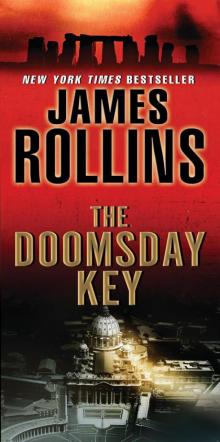 The Doomsday Key: A Sigma Force Novel
The Doomsday Key: A Sigma Force Novel